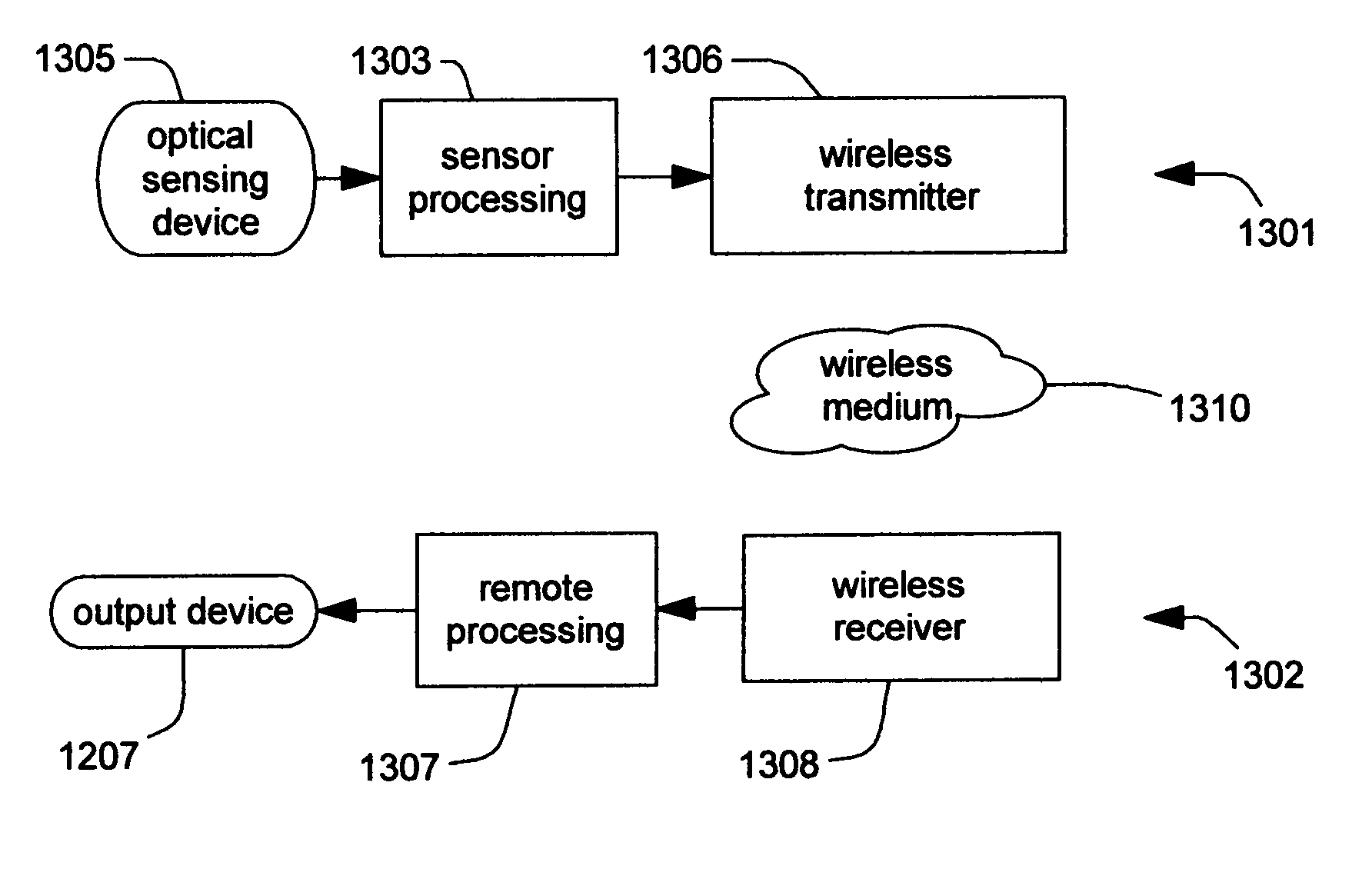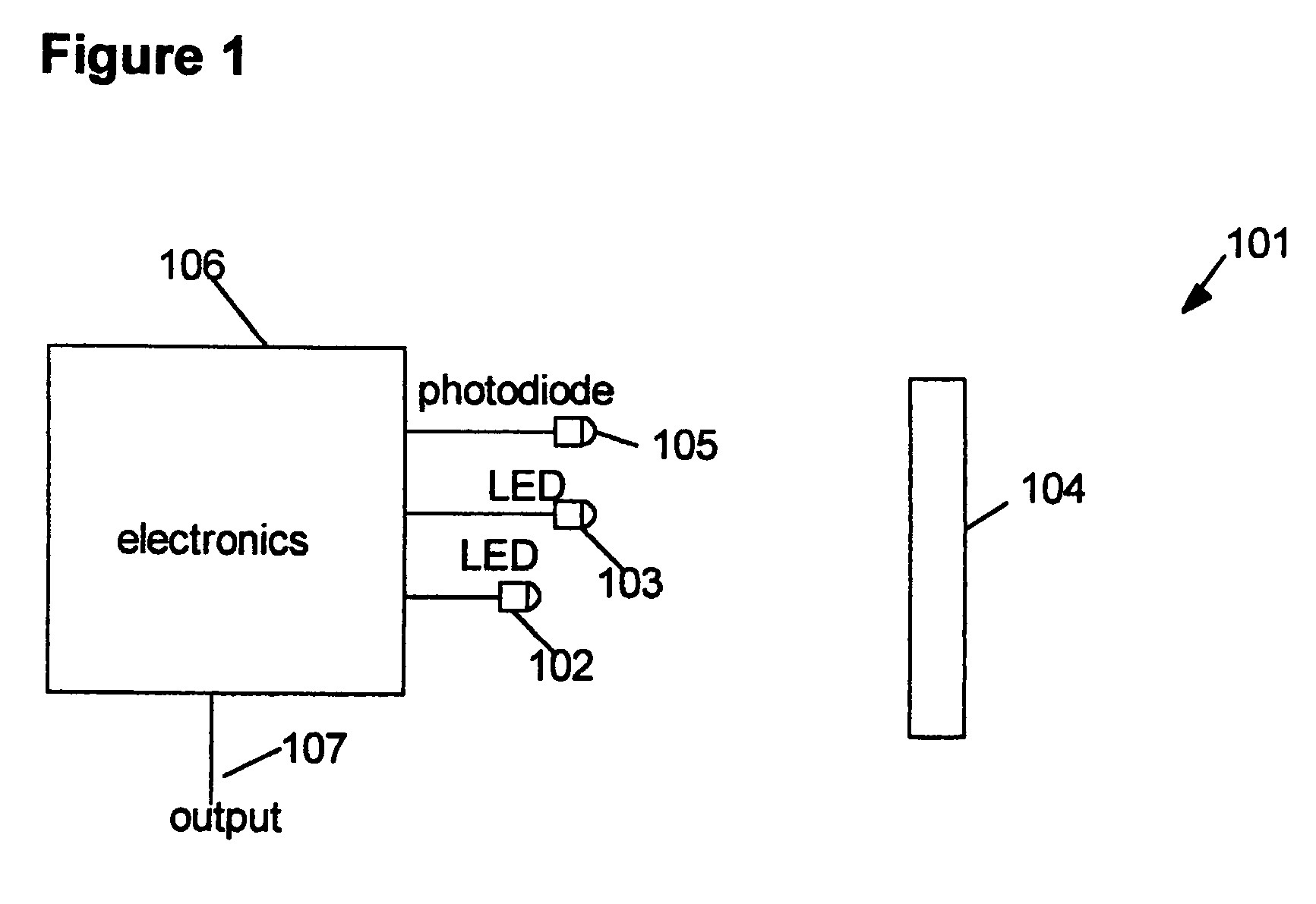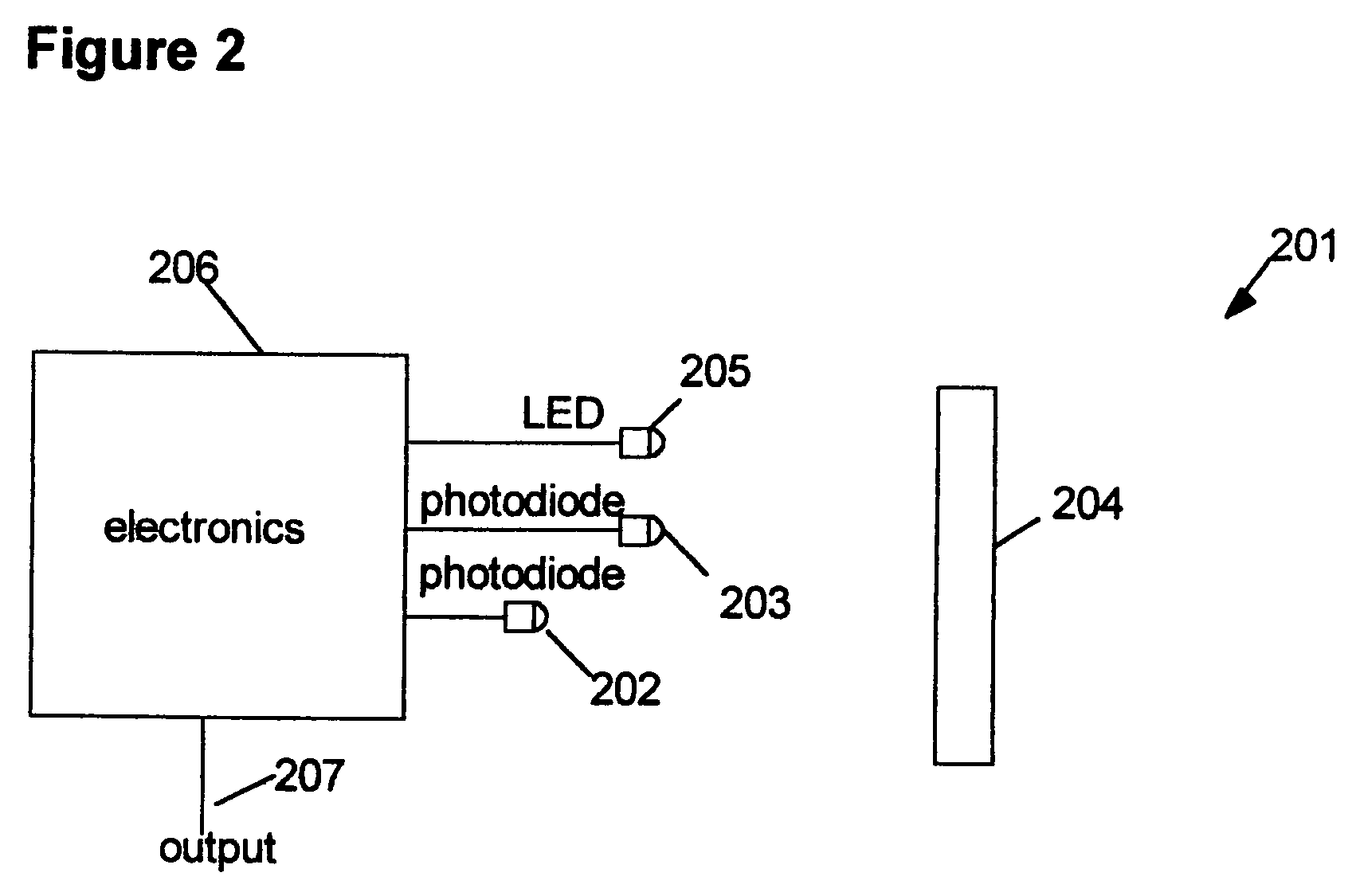Method and apparatus for measuring distances using light
a technology of distance measurement and light, applied in the direction of distance measurement, instruments, television systems, etc., can solve the problems of high noise into the overall system, too complex lasers and optics in such approaches, and too expensive for budget limited or highly miniaturized applications, etc., and achieve the effect of convenient us
- Summary
- Abstract
- Description
- Claims
- Application Information
AI Technical Summary
Benefits of technology
Problems solved by technology
Method used
Image
Examples
Embodiment Construction
[0031]FIG. 1 is a block diagram of a preferred embodiment of a distance-measuring system 101 of the present invention, in which a “far” light source 102 and a “near” light source 103 are located at different distances from an object 104. Preferably, the light sources 102 and 103 have equal intensities and are LEDs (light-emitting diodes). Electronics 106 provides driving signals to sequentially illuminate the light source 102 and the light source 103. A light detector 105, preferably a photodiode, sequentially receives light from the light source 102 and the light source 103 that is reflected from the object 104. Preferably, the light sources 102 and 103 and the light detector 105 are located adjacent each other and contained in a single device. While for certain applications the light sources 102 and 103 need only be sequentially illuminated once, for other applications the light sources 102 and 103 are repeatedly illuminated sequentially for a selected period of time to obtain a d...
PUM
 Login to View More
Login to View More Abstract
Description
Claims
Application Information
 Login to View More
Login to View More - R&D
- Intellectual Property
- Life Sciences
- Materials
- Tech Scout
- Unparalleled Data Quality
- Higher Quality Content
- 60% Fewer Hallucinations
Browse by: Latest US Patents, China's latest patents, Technical Efficacy Thesaurus, Application Domain, Technology Topic, Popular Technical Reports.
© 2025 PatSnap. All rights reserved.Legal|Privacy policy|Modern Slavery Act Transparency Statement|Sitemap|About US| Contact US: help@patsnap.com



